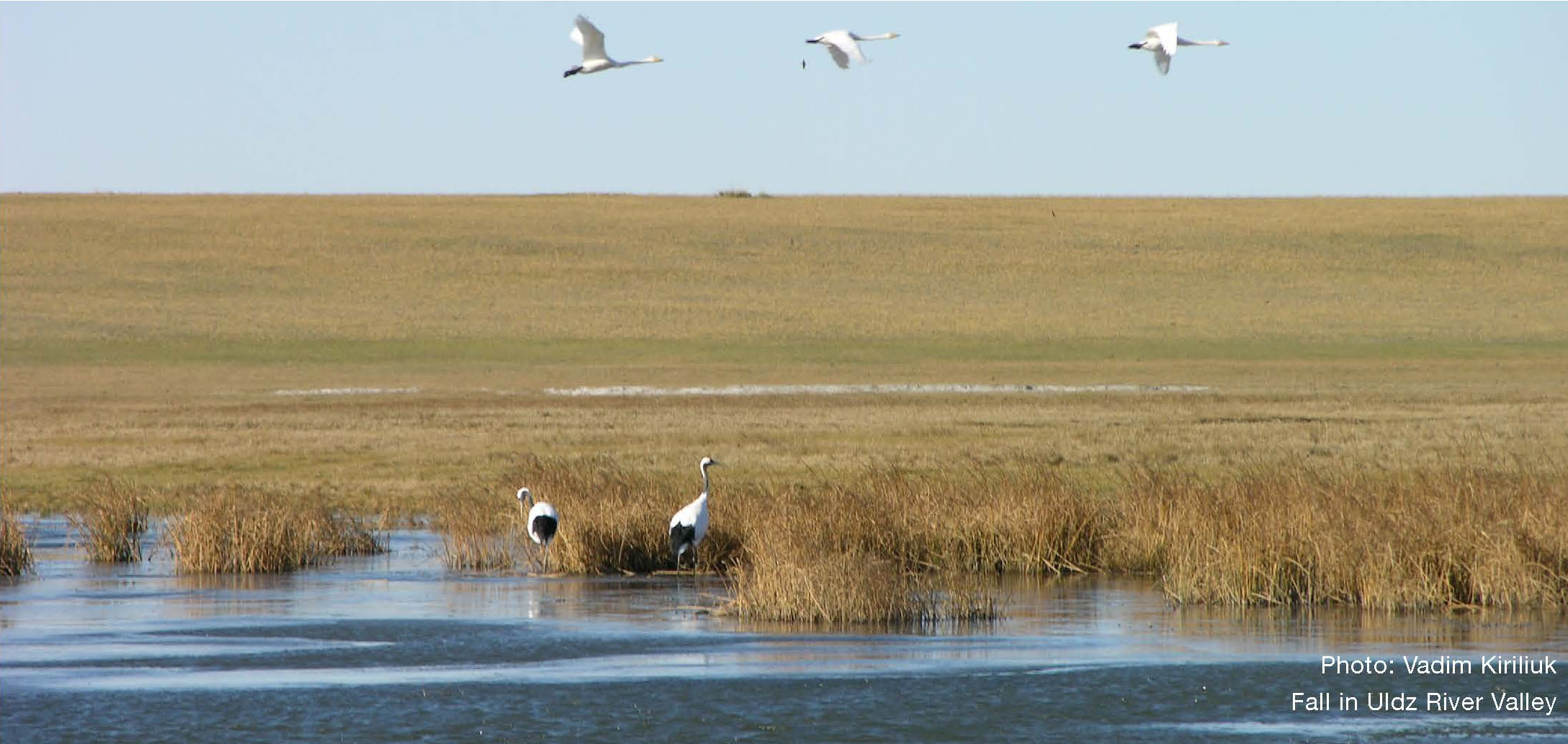Climate Change in the Daurian Steppe

Photo: Vadim Kiriluik
The Dauria Region
East Asia’s Dauria region is a highly dynamic and diverse ecosystem with extreme climatic conditions. A complex system of wet and dry periods operates in the region over a 30-year cycle, bringing periodic times of water-abundance and drought. This has a massive influence on the ecoregion, altering the species composition and boundaries of plant communities, influencing the breeding site locations of millions of birds, controlling the migration patterns of hoofed animals, and causing the constant drying and filling of lakes and the advance and retreat of forest.
The wet-dry cycle in the Dauria is made more complex by the fact that the region’s various river systems are fed by a range of different mountain catchments, so in any given year one area will be water-abundant while another will be water-deficient. This diversity allows waterbirds and steppe wildlife to move between habitat areas to seek the most favourable conditions. These climatic and hydrological cycles and the resultant diverse ecosystems are of key importance in sustaining the biodiversity and productivity of the Dauria ecosystems.
As climate change threatens the world’s ecosystems, its impact on the fragile nature of the Dauria region has become of critical importance to understand. With the climate of the Dauria region already one of extremes in temperature and water availability, an understanding of the likely impacts of climate change on this system is central to undertaking conservation actions given the massive influence of the natural wet-dry cycle on the Dauria ecoregion.
Results of initial climate modeling are not optimistic. Various models predict that although climate change will increase the amount of precipitation in the region, in combination with this there will be much greater fluctuations in precipitation. In addition, the mean annual temperature of the region has already increased by two degrees centigrade and consequently there has been increased evaporation.



